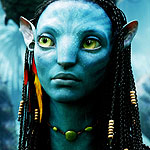» Site Navigation

2 members and 668 guests
Most users ever online was 47,180, 07-16-2025 at 05:30 PM.
» Today's Birthdays

» Stats

Members: 75,912
Threads: 249,118
Posts: 2,572,194
Top Poster: JLC (31,651)
Welcome to our newest member, coda
|
-
BPnet Veteran


Re: Adding "one more morph": A bright future for the BP industry
 Originally Posted by dr del

Hi,
No, your post was fine - I'm just an idiot. 
dr del
I disagree heartily with this statement! I appreciate your input!
JonV
-
-
BPnet Veteran


Re: Adding "one more morph": A bright future for the BP industry
 Originally Posted by brainman1000

There is actually a more effective equation to use that I learned in statistics years ago. The basic concept is taking a sample and figuring out the number of combinations of a given set out of that selection. The example was how many different poker hands are possible with a single deck of cards. The sample there is 52 unique cards and a 5 card set.
I found it in my notes. It is the combination rule in the rules of counting
C=n!/[(n-k)!k!]
C is the number of combinations
n is the number of morphs you have
k is the selection set you are using
For example, if you have 15 genes in your collection and you assume you can only get 5 into a snake, that means you have 3003 possible combinations. If you assume 6 you have 5005 possible combinations.
-
-
BPnet Veteran


Re: Adding "one more morph": A bright future for the BP industry
 Originally Posted by brainman1000

I found it in my notes. It is the combination rule in the rules of counting
C=n!/[(n-k)!k!]
C is the number of combinations
n is the number of morphs you have
k is the selection set you are using
For example, if you have 15 genes in your collection and you assume you can only get 5 into a snake, that means you have 3003 possible combinations. If you assume 6 you have 5005 possible combinations.
Brainman is absolutely right. Let's break it down as follows.
Let n be the number of genes in your collection.
Let k be the number of genes you can get into one animal (ie, k=3,4,5 for most people).
Then the number of combinations of n genes with UP TO k genes in each animal is given in the following table:
The punchline is that even with 8 genes in your collection, for example, the number of animals with 3 or 4 genes is still quite large (and once again, these are all underestimates since super forms are not in here).
Note there is nothing above the diagonal since you can not produce combos with more genes than you have in your collection.
n / k --->
n........1........2........3........4.........5.........6..........7..........8.. .......9.......10
==============================================================
1........1
2........2........3
3........3........6........7
4........4........10......14.......15
5........5........15......25.......30.......31
6........6........21......41.......56.......62.......63
7........7........28......63.......98.......119.....126......137
8........8........36......92.......162......218.....246......254......255
9........9........45......129......255.....381.....465......501.......510.....511
10......10.......55......175......385.....637.....847......967......1012....1022.. ..1023
For example, with 7 genes in your collection and only producing up to 4 gene animals, you have 98 possibilities.
With 10 genes in your collection and only producing up to 4 gene animals, you have 385 possibilities.
-JonV
-
-
BPnet Veteran


Re: Adding "one more morph": A bright future for the BP industry
 Originally Posted by nevohraalnavnoj

Brainman is absolutely right. Let's break it down as follows.
Let n be the number of genes in your collection.
Let k be the number of genes you can get into one animal (ie, k=3,4,5 for most people).
Then the number of combinations of n genes with UP TO k genes in each animal is given in the following table:
The punchline is that even with 8 genes in your collection, for example, the number of animals with 3 or 4 genes is still quite large (and once again, these are all underestimates since super forms are not in here).
Note there is nothing above the diagonal since you can not produce combos with more genes than you have in your collection.
n / k --->
n........1........2........3........4.........5.........6..........7..........8.. .......9.......10
==============================================================
1........1
2........2........3
3........3........6........7
4........4........10......14.......15
5........5........15......25.......30.......31
6........6........21......41.......56.......62.......63
7........7........28......63.......98.......119.....126......137
8........8........36......92.......162......218.....246......254......255
9........9........45......129......255.....381.....465......501.......510.....511
10......10.......55......175......385.....637.....847......967......1012....1022.. ..1023
For example, with 7 genes in your collection and only producing up to 4 gene animals, you have 98 possibilities.
With 10 genes in your collection and only producing up to 4 gene animals, you have 385 possibilities.
-JonV
1925 with 50 animals wow thats alot
-
-
BPnet Veteran


Re: Adding "one more morph": A bright future for the BP industry
 Originally Posted by brainman1000

Hypothetically speaking anything is possible. The problem with that is that the odds of certain things happening are so low that they are practically impossible. It would be nice to get a snake that has 15 different base morph genes in it, but I really dont think it is realistically possible to achieve that.
Now, if you are talking about the OP, reasonableness is not a factor. If you look at the subject, then reasonableness is key.
I was refering to the OP. I do understand that it is theoretically impossible.
 Originally Posted by nevohraalnavnoj

Brainman is absolutely right. Let's break it down as follows.
Let n be the number of genes in your collection.
Let k be the number of genes you can get into one animal (ie, k=3,4,5 for most people).
Then the number of combinations of n genes with UP TO k genes in each animal is given in the following table:
The punchline is that even with 8 genes in your collection, for example, the number of animals with 3 or 4 genes is still quite large (and once again, these are all underestimates since super forms are not in here).
Note there is nothing above the diagonal since you can not produce combos with more genes than you have in your collection.
n / k --->
n........1........2........3........4.........5.........6..........7..........8.. .......9.......10
==============================================================
1........1
2........2........3
3........3........6........7
4........4........10......14.......15
5........5........15......25.......30.......31
6........6........21......41.......56.......62.......63
7........7........28......63.......98.......119.....126......137
8........8........36......92.......162......218.....246......254......255
9........9........45......129......255.....381.....465......501.......510.....511
10......10.......55......175......385.....637.....847......967......1012....1022.. ..1023
For example, with 7 genes in your collection and only producing up to 4 gene animals, you have 98 possibilities.
With 10 genes in your collection and only producing up to 4 gene animals, you have 385 possibilities.
-JonV
AGGGGGG NERDS!!!!!! WHY ARE YOU ALL SOOO MUCH SMARTER THEN ME....
-
-
Re: Adding "one more morph": A bright future for the BP industry
Ok, I finally got through this whole thread, and now I think my cranium is going to explode! Dang, and I thought I did complicated math all day at work....the Department of Defense has nothing on you guys!
Thomas "Slim" Whitman
Never Met A Ball Python I Didn't Like 
-
-
BPnet Veteran


Re: Adding "one more morph": A bright future for the BP industry
I don't fully understand the table, but I get exactly what you're trying to say in the table.
MH
Who the hell is Pat?
"Pattimuss doesn't run, he prances most delicately, like a beautiful but sad fairy, winged and capped, curly toed shoes on each foot, dancing on dewdrops while lazy crickets play soft music for him to keep time by...." - Wes
-
-
Re: Adding "one more morph": A bright future for the BP industry
Bingo!!!! I have Bingo!!!! Wooo Hoo . I finally won something . I finally won something 
Tony.....
3.1 Crumb Snatchers
0.1 Domestic Engineer
-
-
BPnet Veteran


Re: Adding "one more morph": A bright future for the BP industry
 Originally Posted by hoax

AGGGGGG NERDS!!!!!! WHY ARE YOU ALL SOOO MUCH SMARTER THEN ME....
Hey, just cause I went to school for engineering doesn't make me a nerd....
Oh, wait, yeah it does.
-
-
BPnet Veteran


Re: Adding "one more morph": A bright future for the BP industry
Very cool to think about, but what also worries me is the shrinking of the gene pool that we'd be using in order to produce the crazy combos. Isn't it true that a lot of complex combos have duck's bill-shaped heads, etc.? And wouldn't that get worse as we approach the "abcdefg" morphs? Just speculating a bit...
-
 Posting Permissions
Posting Permissions
- You may not post new threads
- You may not post replies
- You may not post attachments
- You may not edit your posts
-
Forum Rules
|